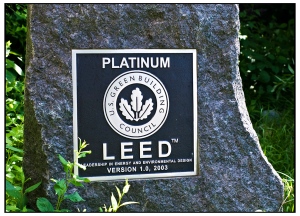What is included in “g reen design”? Green design (also known as sustainable design or environmental design) is the concept of construction built with principles of economic, social, and ecological sustainability. The most well-known green design, by far, is the LEED green building certification process of the US Green Building Council.
reen design”? Green design (also known as sustainable design or environmental design) is the concept of construction built with principles of economic, social, and ecological sustainability. The most well-known green design, by far, is the LEED green building certification process of the US Green Building Council.
Yesterday, I had a chance to attend Phil Kabza (“SpecGuy”)’s presentation “Specifying LEED Requirements: The Best of Green from Masterspec” at the GreenNC trade show.
According to Phil, there are 4 general LEED credit requirements for construction, including:
1. Refrigerant & clean agent removal
2. Construction waste management
3. Construction indoor air quality management
4. Measurement & verification (post construction)
As Phil emphasized, LEED specs must be project specific, and should not simply be cut and pasted from previous projects.
Want to see a LEED specification in action? Check out an example of a LEED Spec on Sustainable Design Requirements (01 81 13) here.
Interested in learning more about LEED and its requirements? Check out the mother of LEED, the USGBC .
______________________
Photo “Platinum LEED” by Seth Anderson via Flickr/Creative Commons License.

